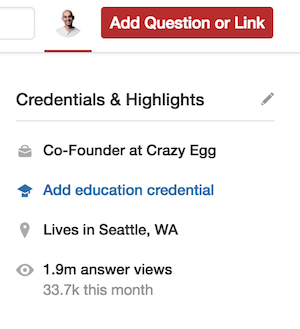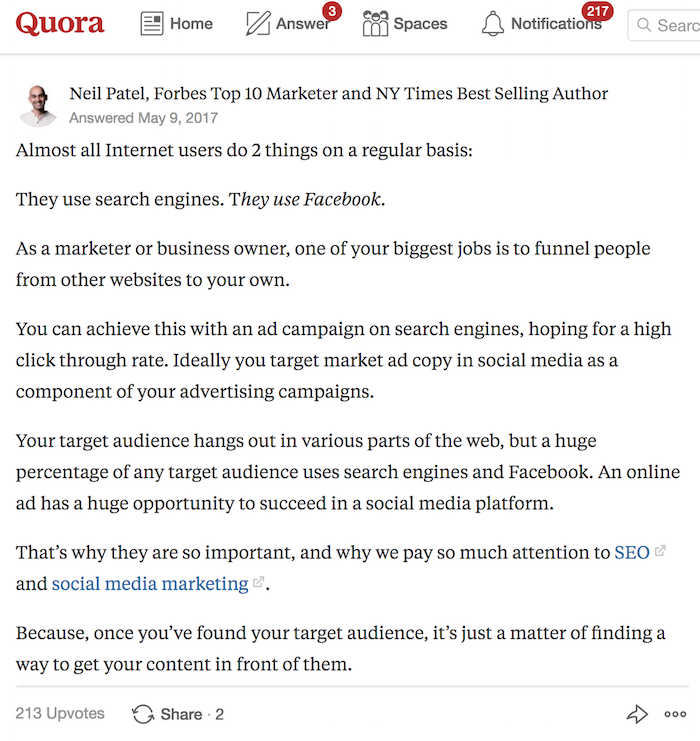
I know what you are going through.
You were excited to launch your brand-new site until you realized no one is coming to it.
So, you head to all of the marketing blogs to learn how to fix this, but for the life of you, your traffic won’t go up no matter which tactic you leverage.
What you’re feeling right now is very common. Not only have I experienced it, but when I was starting out, I even took the small life savings that I made from cleaning restrooms and sweeping up trash to pay a marketing firm to help me out.
And can you guess what happened?
They took my money and provided no results.
See, what most marketers aren’t telling you is that there are two main reasons why you aren’t getting traffic to your brand-new site (other than the fact that you don’t have much money to spend on ads):
- Marketing is a long-term game – almost all of the tactics marketers, including me, talk about are long-term tactics. They take 6 months or even longer to see any results.
- Your execution needs to be flawless – if you don’t implement the tactics correctly, you won’t see results.
Now, this doesn’t mean you can’t see short-term results or sales. More so you have to change up your strategy.
So, I thought I would do something a bit different today. I am going to break down what you should be doing during the first 12 weeks after launching your site.
I’ll be sharing a tactic for you to follow each week and, if you follow it, you’ll notice that your traffic will start going up right away. From there, you’ll start to see sales coming in.
Before I dive into the 12 tactics, note that you won’t have to spend much money, if any at all. I am also not going to give you advice that is extremely time-consuming, like writing blog posts, as you’ll also be running your business at the same time.
And of course, the tactics work for both B2B and B2C sites. It doesn’t matter if you are an ecommerce site or a SaaS company. Follow the steps below exactly.
Week #1: Respond to comments on other people’s blog without spamming
Have you heard of a popular site called Mashable? It was founded by Pete Cashmore.
When he launched his competing site to TechCrunch, no one knew about him and no one cared to listen to him as he was based in Scotland instead of Silicon Valley.
But do you think that stopped him? Of course not!
So, what did he do? He went out there and commented on every competing tech blog. And not only did he comment, but he always tried to be the first commenter.
See, when you leave a comment on a blog, most ask you to put in your name, URL, and comment.

Assuming you are leaving valuable comments and nothing spammy, you’ll notice that you’ll get referral traffic in your Google Analytics.
This will be because a very small percentage of people are clicking on your name when you leave a comment.
And considering some of the most popular blogs on the web receive millions of visitors each week, it’s not that hard to drive a fraction of a percent of their traffic back to your site.
The key with this strategy is to be one of the first commenters as that ensures your comment is at the top. The other key, of course, is that your comment must add value.
For example, if you own a marketing related product or service, marketing blogs would be a great place to comment. But what do you think will happen if you leave this kind of standard comment:
Nice post! Keep up the good work!
Nothing. On the flip side, if you put in some effort to write something that benefited the reader, you’ll have a chance at getting some traffic.
An example could be something like this…
Neil, I love the actionable tips on generating traffic for a brand-new site within the first 3 months of launching it. But I know you didn’t discuss much if any about SEO.
I know SEO is a long-term strategy, but people should get a head start right away or else it will take that much longer to get loved by Google.
One thing that I recommend every site to start off with is simple keyword research. You can use any free keyword research tool like Google Keyword Planner and type in your competitor URL. Google Keyword Planner will then suggest keywords and even show you the cost per click.
By going after keywords that aren’t competitive and have a higher cost per click, you’ll find that you can generate search traffic at a much faster pace and these keywords will drive sales. As keywords with a high cost per click tend to mean that they convert.
Do you see what I mean by writing thoughtful comments that help people?
This tactic works!
Jared, who runs Skincare by Alana, still leverages this tactic today. When he and his wife launched their ecommerce store they commented on other popular blogs and social sites when it came to all things skin related.
This helped them generate 931 visitors during their first week and 12 sales.
I know it’s not a lot, but you have to start somewhere and grow from there.
I also have leveraged this tactic for years. Instead of focusing just on blogs, I commented on relevant social sites too.

As you can see from the screenshot above, I’ve generated over 1.9 million views on my Quora responses.
Here’s an example of one of my responses:

You’ll notice that in my response I also link out to my own site which drives traffic back to me.
Yes, the response looks very long, and you may think I put in tons of work, but I literally copied and pasted a blog post I had already written and added it to Quora.
Google doesn’t penalize for duplicate content.
source https://neilpatel.com/blog/traffic-brand-new-site/
No comments:
Post a Comment